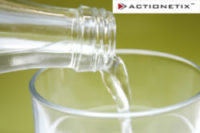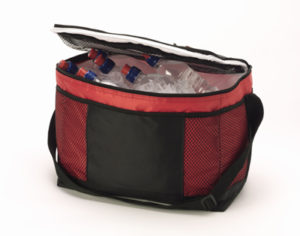Surviving and Thriving in the Heat – How to Calculate Water Intake for Maximum Performance
The dog days of summer bring on new challenge of staying hydrated while maintaining a proper core temperature so you can ride as hard at the end of the moto as you did at the start. Knowing how to prep the machine we call ‘the human body” is the sure-fire way to keep your number plate clean at the front of the pack. In article, water intake and a road-map to peak performance as Mother Nature turns up the heat… and humidity!
Hydration
You know exactly what it feels like when you’re starting to get low on fluids. The fast lines that were so clear early in the moto are now mysteriously moving jumping out of the way. You miss the berm that lets you carry speed through the corner, you cross-rut on the landing of a familiar table top, and your lightning-fast lap times all but disappear as your competition goes flying by. Your body needs fluids… and lots of them in order to perform at a peak level. How much water should you be drinking? Read on and you may be surprised at how high the demands are for water.
Although there are a number of clinical studies on dehydration and exercise, very few actually make recommendations on fluid intake. The athletes we work with here at ACTIONETIX all have individual needs that we monitor on a regular basis, however we start with a simple equation when planning their water intake. Our equation for almost all athletes is seen below and is for 27 degrees Celsius or 80 degrees Fahrenheit:
Bodyweight in pounds x 1 = Number of fluid ounces need for peak performance
So with this equation as a starting point, let’s look at an average 175 pound  rider. This individual would need 175 ounces of fluid intake each day to stay hydrated. Knowing that a cup of water is 8 ounces, the athlete would have to drink approximately 22 cups of water each day. Converting this to liters, it would equate to 5.5 liters. Now remember that as I mentioned, this is simply the starting point. I also factor in a temperature equation as the thermometer rises above 27 degrees Celsius or 80 degrees Fahrenheit. This is how it works.
rider. This individual would need 175 ounces of fluid intake each day to stay hydrated. Knowing that a cup of water is 8 ounces, the athlete would have to drink approximately 22 cups of water each day. Converting this to liters, it would equate to 5.5 liters. Now remember that as I mentioned, this is simply the starting point. I also factor in a temperature equation as the thermometer rises above 27 degrees Celsius or 80 degrees Fahrenheit. This is how it works.
For every degree Celsius, I add .1 ounces for each pound of bodyweight to the above equation. So, let’s take that same 175 pound rider in 32 Celsius or 91 degrees Fahrenheit. His fluid intake equation would look like this:
175 x 1 .5 (the base of 1 oz. + a factor of .5 due to the 32 degree temperature) = 262.5 ounces
Looking at the total fluid ounces, this converts to approximately 32 cups or just over 2 gallons of fluid intake. For most racers this size, this may be twice as much as they are used to drinking. Upping your fluid intake to this level takes work. You can’t just drink this much water the day before a race. You have to acclimate your body to this by drinking higher amounts day in and day out. Obviously the demands for fluids will be maximized on a hot race day, and consuming high levels of fluids becomes easier.
What About the Humidex?
The way we treat the humidex is pretty much the same as we would treat temperature. That is to say, that if the temperature is 30 degrees Celsius, but the humidity brings the humidex to 38 degrees Celsius or 100 degrees Fahrenheit, we have to prepare for the highest value. With all of these factors in mind, this is how much fluid the same 175 pound rider will need:
175 x 2.1 (the base of 1 oz. + 1.1 due to the humidex of 38 degrees) = 368 ounces
Break this down and you get 46 cups, or a whopping 2.9 gallons! I think you get the picture here that probably 99% of you are not maximizing your performance with the appropriate fluid intake. But fluids are not the only thing you need to beat the heat and lay down fast laps all day long. Sodium (salt) and potassium go hand in hand with fluid intake.
The Salt-Potassium Connection
Water, salt and potassium all work together to create an environment of hydration and performance. If one of these is too low, it will directly affect the other two. For example, if sodium is too low in your body due to excess sweating, your body will get rid of potassium (this process is regulated by a hormone called aldosterone). If potassium is too low, your body will get rid of salt in the urine. Sodium and potassium exist in a 3:2 ratio in your body  and if this ratio is shifted dramatically, it will directly affect hydration and performance.
and if this ratio is shifted dramatically, it will directly affect hydration and performance.
Here’s a simple rule for how much salt you need. Every liter of fluid you drink, your body needs 1800 mg of sodium. In simple terms, that’s 1 teaspoon of salt for every liter. Most athletes simply don’t come close to this intake and consequently never reach their true potential – particularly in the heat. When it’s hot out and you’re sweating, you need to get extra salt on your foods. Team that up with high potassium foods such as potatoes, carrots and bananas and you go a long way to providing a your body with serious performance benefits.
The days are long at the track so make sure you stay hydrated, get out of the sun and use the appropriate amount of salt and potassium rich foods. This is one of the greatest performance advantages you’ll have on anyone of your competitors. Stay safe, stay hydrated, stay fast! As always, if you have any questions, just send us a note at info@action-brands.com, and don’t forget to maximize your performance and reduce arm pump with HemoAde.
For a better understanding on how to maximize your performance with nutrition, training and supplementation check out the ARM PUMP ELIMINATION SYSTEM eBook today.
For more scientific abstracts on hydration visit PubMed.
